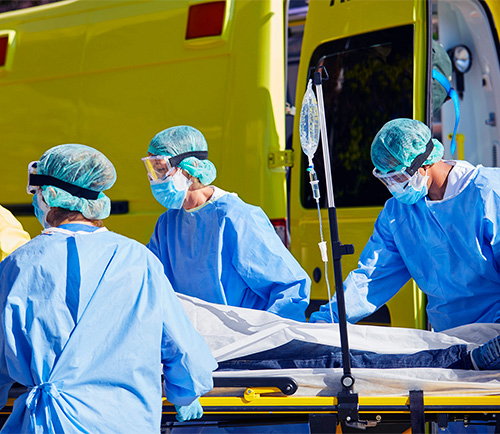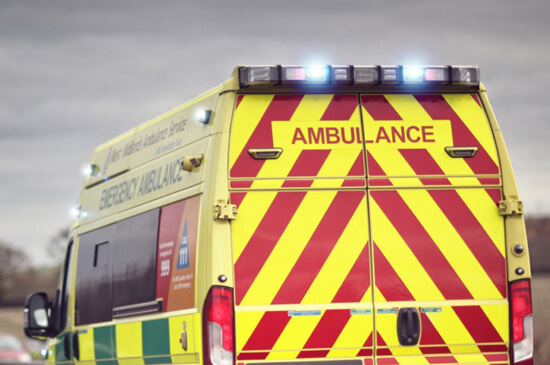Ambulance

Invest in technology to help paramedics save lives
Technology is enabling transformative change for ambulance services
An ambulance isn’t simply a taxi to hospital. Having the right technology and the right equipment means that paramedics can reach a patient faster, diagnose them quickly and more accurately, and prepare the hospital for the patient’s arrival with lightning-fast communication.
However, the ambulance service is still under pressure to improve clinical quality, create efficiencies and ensure patient safety, all whilst dealing with increased demand from an ageing population. Investment in technology, from critical network infrastructure to the latest devices, is driving transformation for the emergency services across the UK.
5G for healthcare and the ambulance service
We’re already developing our 5G network (and we were the first to launch in six cities across the UK), as this technology will be at the forefront of the next wave of digital transformation in healthcare and the emergency services. Our integrated smart network, combining fixed, mobile and wi-fi technology, will ensure the maximum possible 5G coverage nationwide.
But why will 5G make such a difference in the public sector?
- It’ll support new services and the most cutting-edge applications
- It’ll drive greater efficiency and help to create cost savings
- It’ll deliver seamless connectivity for hospitals, control centres and ambulances

5G in practice: Remote ultrasounds
A key area in which BT’s 5G capabilities have been tested is ultrasonography. It’s the second most common diagnostic test conducted by the NHS, with over 9.5 million carried out in 2018 in England. The University Hospitals Birmingham NHS Foundation Trust (UHB), BT and WM5G decided to see how 5G could transform healthcare and the emergency services. This led to the UK’s first demonstration of a remote-controlled ultrasound scan over a public 5G network.
Transforming front-line care in the ‘connected ambulance’
The demonstration brought the concept of a 5G ‘connected ambulance’ to life. With 5G, front-line staff have access to new technologies and can create a facility where patients can be diagnosed and triaged in the most appropriate settings. Remote diagnostics can be performed by paramedics in the field, supported by clinicians in the hospital, who can interpret the ultrasound image in real-time.
Because the images are relayed over a high-bandwidth 5G connection, the clinician can watch the ultrasound examination whilst keeping an eye on the overall scene inside the ambulance. The superfast speeds of 5G ensure sharper and more reliable imagery than was previously possible.
This approach should bring benefits both to patients and the NHS:
- speeding up diagnoses, giving patients a better overall experience
- fewer ambulance journeys and emergency department visits
- more effective outcomes and greater overall efficiency for the hospital


More and more, less and less
- There are typically 10.7 million calls and NHS 111 transfers to the ambulance service in England each year.
- 6.6 millions incidents resulted in face-to-face attendance by the ambulance service in England in 2017.
- 90% of Chief Fire Officers (CFOs) say further cuts in front-line posts are inevitable.




